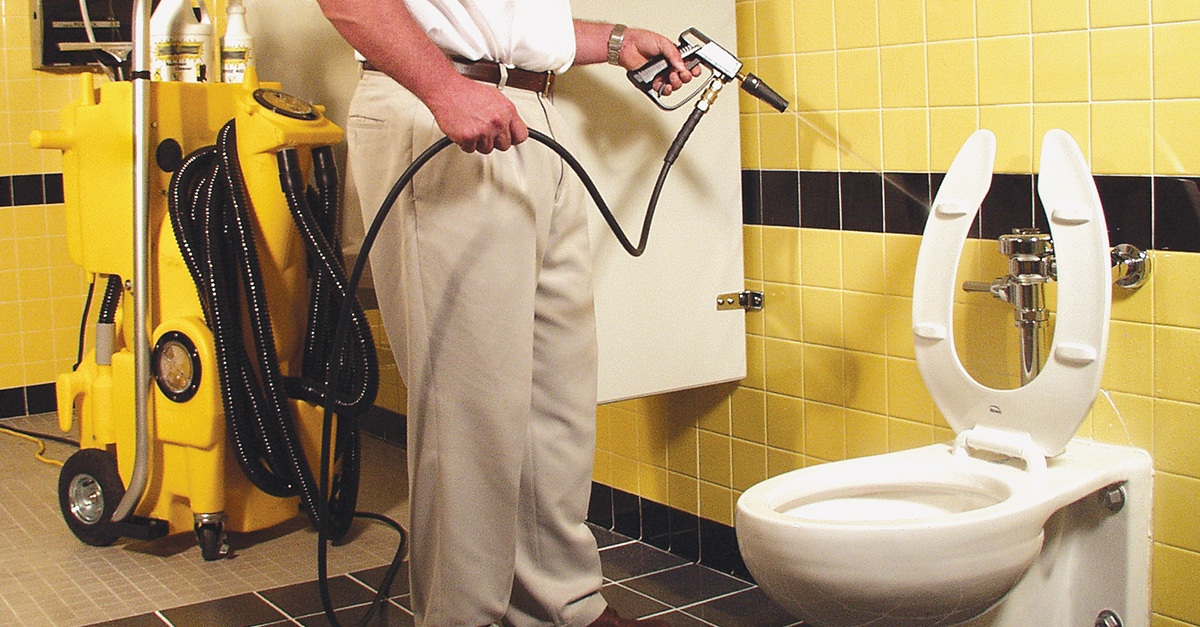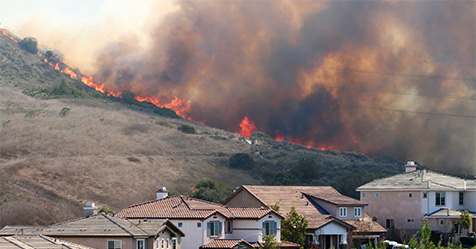I still remember it like it was yesterday. Driving in my car on a hot July afternoon, I was listening to the local National Public Radio (NPR) radio station. NPR is well-known and respected for all kinds of interviews and reports, but this particular interview was totally unexpected. It was about professional cleaning.
The 2004 program, which NPR titled, “A Janitor’s Bacteria-Blasting Approach to Cleaning,” was conducted by Nevada Public Radio and featured an interview with Rex Morrison. According to the interviewer, Morrison, at the time, was “a school custodian who invented an efficient, bacteria-blasting approach to cleaning that’s being adopted by janitorial crews all around the state.”
I almost had to pull the car over because I was so surprised to hear a national radio station broadcasting a segment about professional cleaning. We in the industry are accustomed to articles and information about cleaning in schools and all kinds of facilities, but to be frank, it still is quite rare to hear major publications or radio and television networks discuss professional cleaning-related issues.
That was also the first time I heard about Morrison, as well as the cleaning methodology he developed: process cleaning. Eventually, as more and more schools and facilities began adopting this cleaning practice, process cleaning became Process Cleaning for Healthy Schools® (PC4HS).
PC4HS is designed to combine the best of zone cleaning—the traditional form of cleaning where one person tackles all of the cleaning needs in a facility or a specific part of a facility—with Team Cleaning®, or as it is sometimes called, group cleaning. With this approach, cleaning workers work as a team, but each worker has specific duties: trash collection, vacuuming, restrooms, etc.
Starting the Process
The PC4HS approach begins the minute cleaning workers start their work or enter an area to be cleaned, and immediately lock the door. Yes, there is a security reason for this, but the bigger concern is to prevent interruptions. Locking the door addresses one of the key goals of PC4HS and that is to improve worker productivity. The fewer interruptions a cleaning worker faces, the faster he or she can get the work completed, improving productivity and helping to reduce cleaning times overall.
The next step in the approach involves where the cleaning process begins. Very often in traditional cleaning methodologies, cleaning begins wherever the cleaning worker happens to be: by the door, near a far wall, in the center of the room, etc. This is not true in PC4HS. With the PC4HS method, cleaning work is designed to begin at the door and move inward.
Once cleaning begins, tasks are performed in a specific, pre-determined order, according to Morrison. An example of this specific pre-determined order is as follows:
- Begin by cleaning/sanitizing desks and counter surfaces.
- Collect trash.
- Vacuum all carpeted areas.
- Clean restrooms.
- Perform detailed or specialized cleaning tasks; instead of cleaning as needed or as time allows, work tasks into the regular cleaning schedule.
“[Process cleaning] is based on the concept that the best way to clean is a system in which tasks are structured like a row of dominos, so one step logically ‘falls’ toward the next,” Morrison says. “[Using] this system makes cleaning more orderly so cleaning consistency is achieved and every task is performed as and when needed, enhancing effectiveness and efficiency.”
Applying PC4HS to Restroom Cleaning
What we have discussed thus far is the essence of process cleaning as it pertains to cleaning most areas of an office, school, or similar facility area, but it does not apply to restroom cleaning. Morrison found that he had to rethink the process cleaning model somewhat so that the goals of PC4HS—improving worker productivity, achieving cleaning consistency, and ensuring that all tasks are performed when and as needed—still were achievable when cleaning restrooms. And because restroom cleaning tends to be slow, labor intensive, and one of the most important tasks when it comes to protecting the health of building users, establishing a process cleaning method for restrooms was critically important.
The system Morrison developed includes a top-down cleaning approach. Instead of working from the door and moving inward, top-down cleaning begins by cleaning high areas first, including ceilings (when needed), tops of walls, partitions, stall doors, and high-touch areas, such as light switches, window ledges, door knobs, etc. Other components include trash collection, cleaning restroom fixtures, floor cleaning, and deep cleaning on a set schedule.
With the deep cleaning step, a third type of cleaning that uses color coding is added to the process. A map is made of the restroom and certain areas are assigned a specific color indicating when those areas need a deep or more-focused cleaning. For instance, let’s say a section of the restroom map is blue. In this case, blue may indicate an area of the restroom should be given special cleaning attention on Monday. A green area may indicate deep cleaning on Wednesday. Applying the color-coding method helps to ensure consistency in restroom cleaning by using the process method, and ensures that all areas are cleaned when and as needed—two of the approach’s key goals.
Floor Issues
As the process cleaning for restrooms model evolved in the 2000s, it adopted the traditional floor cleaning method of using mops and buckets. However, mops and buckets can have shortcomings—they tend to be slow—and they present health concerns. As the mop becomes soiled, it can contaminate the cleaning solution and spread contaminants over the floor.
While PC4HS does not endorse specific products, equipment, or cleaning systems, it does report that replacing mops and buckets with what ISSA, the worldwide cleaning industry association, refers to as “spray-and-vac” cleaning systems has proven to be more effective and more hygienic, as well.
Spray-and-vac cleaning is a no-touch and pressurized cleaning method. While they do not all work the same and their features may vary, different manufacturers now make variations of spray-and-vac systems. These systems appear to fit in well with process cleaning because they help to improve worker productivity—this cleaning process tends to be at least one-third faster than traditional floor cleaning methods—and because the process helps automate floor and restroom cleaning.
The Intangibles Become Tangible
It should be noted that the process cleaning system has resulted in other benefits, some of which were unexpected. For instance, it has helped professionalize cleaning. All cleaning workers follow the same guidelines and the same procedures, helping to ensure all tasks are completed when and as scheduled. And related to this, the process has helped cleaning workers become more enthusiastic about their work. Morrison says the process has helped renew the importance and energy cleaning workers put into their work, which has not only helped them, but contributed to the success of PC4HS.
Robert Kravitz is a frequent writer for the professional cleaning and building industries. He may be reached at[email protected].




